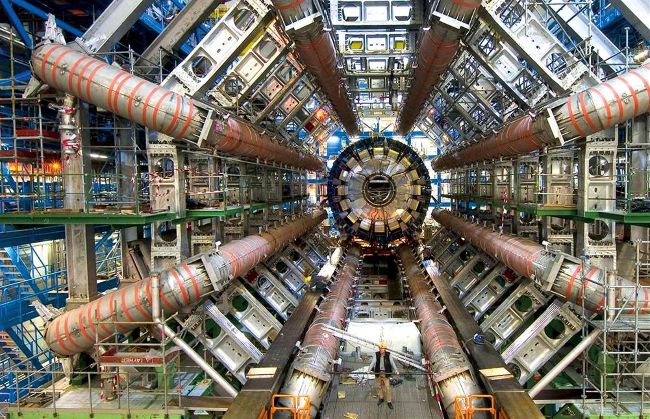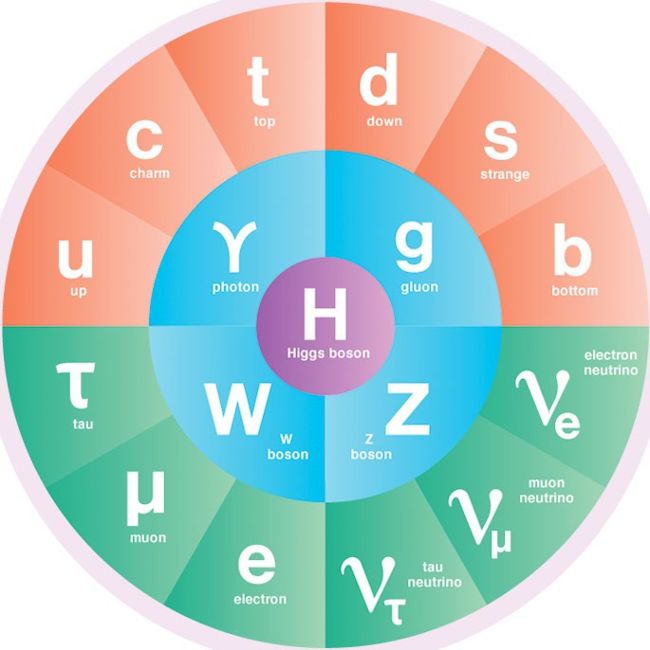Inside the ATOM SMASHER
EXPLORE THE 16.6-MILE LENGTH OF THE WORLD’S BIGGEST PARTICLE ACCELERATOR AND DISCOVER THE INCREDIBLE NEW EXPERIMENTS CONDUCTED BY THE LHC
WORDS ANDREW MAY
DID YOU KNOW?
CERN features prominently in Dan Brown’s novel Angels and Demons, and the Tom Hanks movie based on it

This high-tech particle accelerator smashes atoms together
© Getty
If you see a news headline about exotic new subatomic particles, the chances are the discovery was made at CERN, the European Organization for Nuclear Research, located near Geneva in Switzerland. A recent example occurred in January 2022, when CERN scientists announced “evidence of X particles in the quark-gluon plasma produced in the Large Hadron Collider (LHC)”. Hiding behind that technospeak is the eye-popping fact that CERN succeeded in recreating a situation that hasn’t occurred naturally since a few microseconds after the Big Bang. That particular study drew on pre-existing data from the LHC, the world’s biggest particle accelerator, which has been undergoing a major upgrade since 2018. When it restarts this spring after a three-year hiatus, we can expect a whole new spate of discoveries, so it’s a good time to take a closer look at what makes the LHC – and the rest of CERN – so unique.
The LHC is a particle accelerator –a device that boosts subatomic particles to enormous energies in a controlled way so that scientists can study the resulting interactions. The ‘large’ that the L stands for is an understatement; the LHC is by far the biggest accelerator in the world right now, occupying a circular tunnel nearly 17 miles in circumference. The middle letter, H, stands for ‘hadron’, the generic name for composite particles such as protons that are made up of smaller particles called quarks. Finally, the C stands for ‘collider’ – the LHC accelerates two particle beams in opposite directions, and all the action takes place when the beams collide.

The Standard Model of particle physics consists of 17 elementary particles
Like all physics experiments, the LHC’s aim is to test theoretical predictions – in this case, the so-called Standard Model of particle physics – and see if there are any holes in them. As strange as it sounds, physicists are itching to find a few holes in the Standard Model because there are some things, such as dark matter and dark energy, that can’t be explained until they do.
The LHC’s biggest moment came in 2012 with the discovery of the Higgs boson. Although widely referred to as the ‘God particle’, it’s not really as awesome in itself as that name might suggest. Its huge significance came from the fact that it was the last prediction of the Standard Model that hadn’t yet been proven.
But the Higgs boson is far from being the LHC’s only discovery. It’s also found around 60 previously unknown hadrons, which are complex particles made up of various combinations of quarks. Even so, all those new particles still lie within the bounds of the Standard Model, which the LHC has struggled to move beyond, much to the disappointment of the numerous scientists who have spent their careers working on alternative theories. The first tantalising hints that a breakthrough might be just around the corner came last year, when analysis of LHC data revealed patterns of behaviour that indicated small but definite departures from the Standard Model.